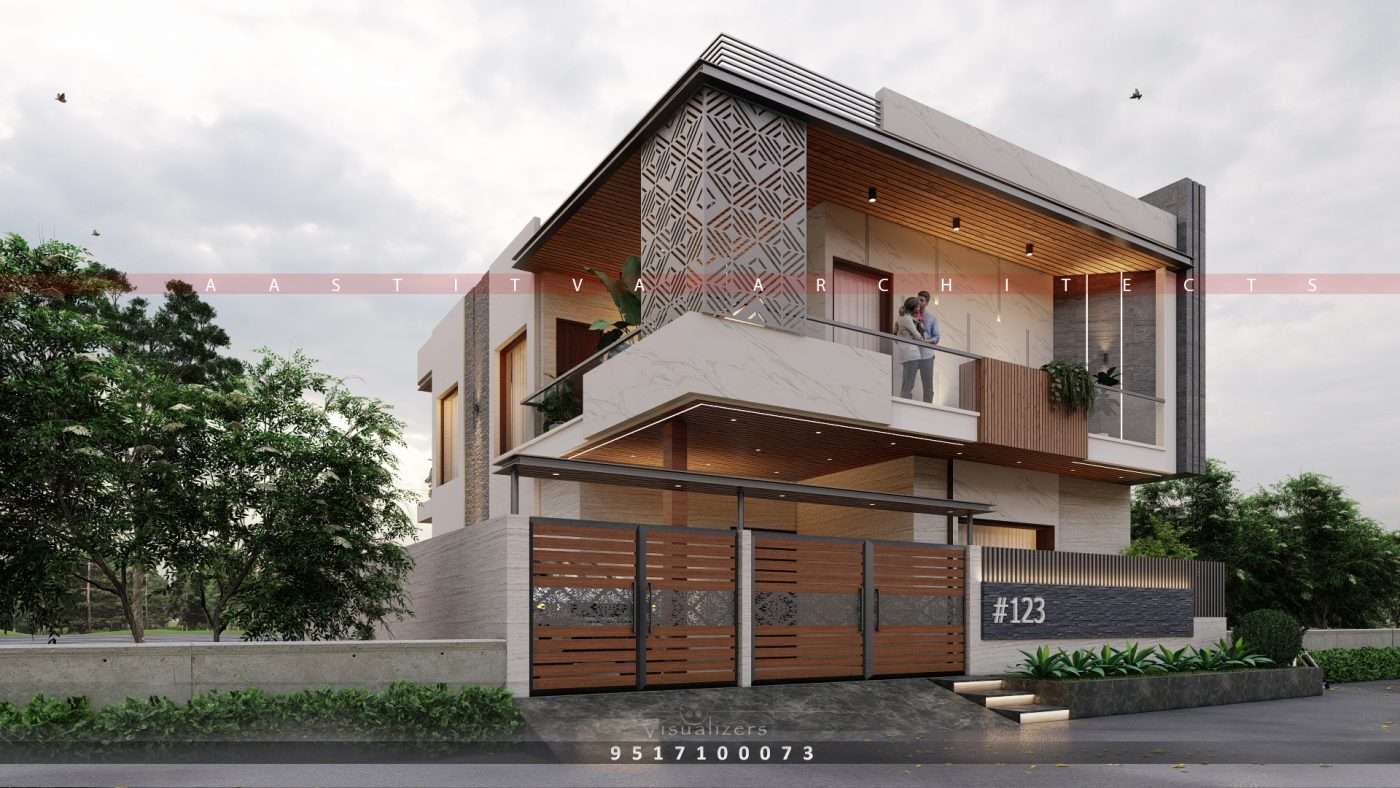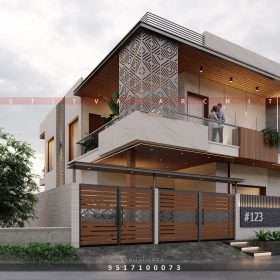
- Introduction
- Definition of front elevation 3D
- Importance in architecture and design
- Understanding Front Elevation
- What is front elevation?
- Traditional vs. 3D front elevation
- Benefits of 3D Front Elevation
- Enhanced visualization
- Improved accuracy
- Better communication with clients
- Components of a 3D Front Elevation
- Architectural elements
- Textures and materials
- Lighting and shadows
- Tools and Software for Creating 3D Front Elevations
- Popular software options
- Features to look for in 3D modeling software
- The Process of Creating a 3D Front Elevation
- Initial planning and concept
- Sketching and modeling
- Refining and detailing
- Real-World Applications of 3D Front Elevations
- Residential projects
- Commercial buildings
- Landscape architecture
- Trends in 3D Front Elevation Design
- Modern design elements
- Sustainable materials
- Integration with smart technology
- Challenges in Creating Facade design
- Technical difficulties
- Cost considerations
- Time constraints
- Case Studies
- Successful facade design projects
- Lessons learned
- Future of 3D Front Elevation in Architecture
- Emerging technologies
- Potential advancements
- How to Choose the Right Designer for Your 3D Front Elevation
- Qualities to look for
- Questions to ask
- DIY vs. Professional 3D Front Elevation Design
- Pros and cons of each approach
- When to hire a professional
- Tips for a Successful 3D Front Elevation Project
- Effective planning
- Clear communication
- Attention to detail
- Conclusion
- Summary of key points
- Final thoughts
- FAQs
- What is the cost of a 3D front elevation design?
- How long does it take to create a 3D front elevation?
- Can I make changes to the design after it’s completed?
- What software is best for 3D front elevation design?
- How can I learn to create my own 3D front elevations?
Front Elevation 3D
Introduction
In the world of architecture and design, visualization is key. One of the most effective ways to bring a building’s design to life is through front elevation 3D. This technique allows architects, designers, and clients to see a detailed, lifelike representation of a building’s facade before construction even begins. But what exactly is front elevation 3D, and why is it so important?
Understanding Front Elevation
What is Front Elevation?
Front elevation refers to the depiction of a building’s front view. It’s an essential part of architectural drawings, providing a clear picture of the design elements that will be visible from the front. Traditionally, these elevations were drawn by hand or with basic computer-aided design (CAD) software, giving a two-dimensional representation of the building.
Traditional vs. 3D Front Elevation
While traditional front elevations are useful, they can be limited in conveying the depth and details of a design. This is where 3D front elevation comes in. By using advanced 3D modeling software, designers can create a three-dimensional, photorealistic image of the building’s facade. This not only enhances visualization but also allows for better planning and decision-making.
Benefits of FACADE
Enhanced Visualization
3D front elevation provides a more realistic view of the building. Clients and stakeholders can see exactly how the finished structure will look, complete with textures, colors, and materials. This immersive experience helps in making informed decisions and adjustments early in the design process.
Improved Accuracy
With 3D modeling, measurements and proportions are more precise. This accuracy reduces the likelihood of errors during construction, saving time and resources. It also ensures that the final product aligns closely with the original design vision.
Better Communication with Clients
Clear communication is crucial in any design project. 3D front elevation bridges the gap between technical drawings and the client’s understanding. By providing a detailed, realistic image, designers can effectively convey their ideas and receive more precise feedback.
Components of a 3D Front Elevation
Architectural Elements
A facade includes various architectural elements such as windows, doors, roofs, and columns. Each element is modeled in detail to create an accurate representation of the building’s facade.
Textures and Materials
One of the advantages of 3D modeling is the ability to apply realistic textures and materials. Whether it’s brick, stone, wood, or glass, these details add depth and authenticity to the design.
Lighting and Shadows
Lighting plays a crucial role in 3D front elevation. By simulating natural and artificial light sources, designers can see how shadows and highlights affect the building’s appearance at different times of the day.
Villa Design | Animation | Elevation Walkthrough – Aastitva Architects
Tools and Software for Creating 3D Front Elevations
Popular Software Options
There are several software options available for creating 3D front elevations. Some of the most popular include AutoCAD, SketchUp, Revit, and 3ds Max. Each has its own set of features and capabilities, catering to different needs and skill levels.
Features to Look For in 3D Modeling Software
When choosing 3D modeling software, consider features like ease of use, rendering quality, and compatibility with other design tools. Additionally, look for software that offers extensive libraries of textures and materials, as well as robust lighting and shadow effects.
The Process of Creating a 3D Front Elevation
Initial Planning and Concept
The first step in creating a 3D front elevation is planning. This involves understanding the client’s requirements, the building’s purpose, and the site conditions. A clear concept is developed, considering all these factors.
Sketching and Modeling
Once the concept is finalized, the next step is sketching and modeling. Using 3D modeling software, designers create a basic structure of the building, gradually adding details and refining the model.
Refining and Detailing
The final stage involves adding textures, materials, and lighting effects. This step requires attention to detail to ensure the model accurately represents the envisioned design. The result is a photorealistic 3D front elevation ready for presentation.
25+ Amazing Luxury villa Exterior Design.
Real-World Applications of 3D Front Elevations
Residential Projects
In residential projects, 3D facade help homeowners visualize their future homes. From small renovations to new constructions, these models provide a clear picture of the end result.
Commercial Buildings
For commercial buildings, 3D facades are crucial for attracting investors and getting approvals. They showcase the building’s potential, highlighting its design features and functionality.
Landscape Architecture
3D front elevations are also used in landscape architecture. They help visualize outdoor spaces, showing how plants, pathways, and structures will look together.
Trends in Facade Design
Modern Design Elements
Modern architecture often features clean lines, large windows, and minimalist designs. These elements are effectively represented in 3D front elevations, giving a sleek and contemporary look.
Sustainable Materials
Sustainability is a growing trend in architecture. Using eco-friendly materials in 3D models not only reflects current trends but also helps in promoting green building practices.
Integration with Smart Technology
Smart technology is becoming an integral part of modern buildings. 3D front elevations can incorporate elements like solar panels, smart windows, and energy-efficient lighting, showcasing the building’s innovative features.
Challenges in Creating 3D Front Elevations
Technical Difficulties
Creating a detailed facade requires technical expertise. Designers must be proficient in using 3D modeling software and understanding architectural principles.
Cost Considerations
3D modeling can be expensive, especially for large projects. The cost of software, hardware, and skilled professionals can add up, making it a significant investment.
Time Constraints
Developing a facade is time-consuming. From initial planning to final detailing, each step requires careful attention, which can be challenging under tight deadlines.
Case Studies
Successful 3D Front Elevation Projects
Several projects have successfully used 3D front elevations to achieve remarkable results. For instance, a residential project in California used 3D modeling to visualize a complex design, resulting in a stunning, award-winning home.
Lessons Learned
These case studies highlight the importance of clear communication, detailed planning, and flexibility in design. They show how overcoming challenges can lead to innovative and successful outcomes.
Future of 3D Front Elevation in Architecture
Emerging Technologies
Technologies like virtual reality (VR) and augmented reality (AR) are set to revolutionize 3D front elevation design. These tools will offer even more immersive and interactive experiences.
Potential Advancements
Future advancements may include more intuitive modeling software, AI-driven design tools, and better integration with other digital platforms, making 3D front elevation design more accessible and efficient.
